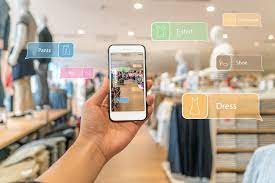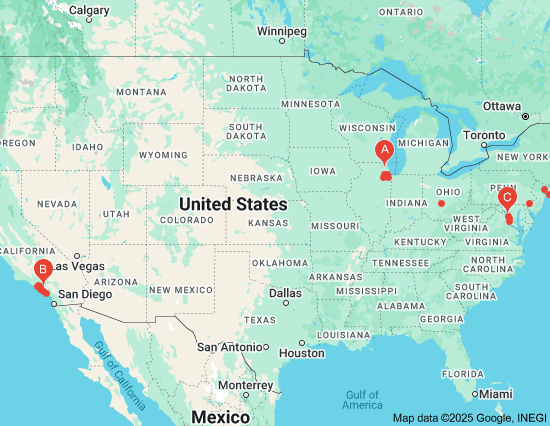
Revolutionizing Retail: The Power of Technology in Shopping Experiences
The Impact of Retail Technology on the Shopping Experience
In recent years, retail technology has revolutionized the way consumers shop and interact with businesses. From online shopping to in-store experiences, technology has played a significant role in shaping the retail landscape.
One of the most notable advancements in retail technology is the rise of e-commerce. Online shopping has made it easier for consumers to browse and purchase products from the comfort of their own homes. With features such as personalized recommendations and easy payment options, e-commerce platforms have transformed the way people shop.
Moreover, brick-and-mortar stores have also embraced technology to enhance the shopping experience. Many retailers now use digital signage, interactive displays, and virtual reality tools to engage customers and create immersive experiences. By leveraging these technologies, retailers can provide a more personalized and interactive shopping environment.
Another key aspect of retail technology is data analytics. Retailers are using data-driven insights to understand consumer behavior, preferences, and trends. By analyzing customer data, businesses can tailor their offerings to meet individual needs and improve customer satisfaction.
Furthermore, mobile technology has transformed how consumers interact with retailers. Mobile apps allow customers to access product information, compare prices, and make purchases on-the-go. This convenience has made shopping more accessible and efficient for consumers.
In conclusion, retail technology has had a profound impact on the shopping experience. From e-commerce platforms to in-store innovations, technology has reshaped how consumers engage with retailers. As technology continues to evolve, we can expect further advancements that will enhance the retail experience for both businesses and consumers alike.
Top 9 Frequently Asked Questions About Retail Technology
- What is retail technology?
- How does e-commerce impact the retail industry?
- What are the benefits of using digital signage in retail stores?
- How can data analytics improve retail operations?
- What role does mobile technology play in modern retail?
- How do retailers use artificial intelligence in their operations?
- What are the security implications of adopting new retail technologies?
- How can virtual reality enhance the shopping experience for customers?
- What trends are shaping the future of retail technology?
What is retail technology?
Retail technology refers to the use of various technological tools and solutions to enhance the operations and customer experience within the retail industry. It encompasses a wide range of applications, including e-commerce platforms, point-of-sale systems, inventory management software, customer relationship management tools, and data analytics. Retail technology aims to streamline processes, improve efficiency, and provide a seamless shopping experience for consumers both online and in physical stores. By leveraging innovative technologies, retailers can better understand consumer behavior, personalize offerings, optimize inventory management, and ultimately drive sales growth. In essence, retail technology plays a crucial role in shaping the modern retail landscape by integrating digital solutions to meet the evolving needs of businesses and consumers alike.
How does e-commerce impact the retail industry?
E-commerce has significantly impacted the retail industry by transforming the way businesses operate and how consumers shop. The rise of e-commerce has led to an increase in online shopping, offering consumers a convenient and accessible way to browse and purchase products from anywhere at any time. This shift has challenged traditional brick-and-mortar retailers to adapt to changing consumer preferences and invest in their online presence. E-commerce has also expanded market reach for retailers, allowing them to target a global audience and drive sales beyond geographical limitations. Additionally, the data-driven nature of e-commerce enables businesses to analyze customer behavior and preferences, leading to more personalized marketing strategies and improved customer experiences. Overall, e-commerce has reshaped the retail landscape by fostering innovation, enhancing competitiveness, and redefining the shopping experience for both businesses and consumers.
What are the benefits of using digital signage in retail stores?
Digital signage in retail stores offers a myriad of benefits that can significantly enhance the shopping experience for both customers and businesses. One key advantage is the ability to grab customers’ attention with dynamic and engaging content, leading to increased brand awareness and product visibility. Digital signage also allows for real-time updates and promotions, enabling retailers to swiftly communicate information about sales, new arrivals, and special offers. Moreover, digital signage provides a platform for interactive experiences, such as touchscreens and augmented reality displays, which can captivate customers and drive engagement. Overall, the use of digital signage in retail stores not only modernizes the shopping environment but also improves communication, boosts sales, and ultimately enhances customer satisfaction.
How can data analytics improve retail operations?
Data analytics plays a crucial role in enhancing retail operations by providing valuable insights into consumer behavior, preferences, and trends. By analyzing data collected from various sources such as sales transactions, customer interactions, and inventory levels, retailers can make informed decisions to optimize their operations. Data analytics can help retailers identify patterns and correlations that may not be immediately apparent, allowing them to forecast demand more accurately, manage inventory efficiently, and personalize marketing strategies to target specific customer segments. Ultimately, leveraging data analytics in retail operations can lead to improved decision-making processes, increased efficiency, and enhanced customer satisfaction.
What role does mobile technology play in modern retail?
Mobile technology plays a pivotal role in modern retail by transforming the way consumers interact with businesses. With the widespread adoption of smartphones and tablets, mobile devices have become essential tools for shopping. Retailers leverage mobile technology to offer convenient shopping experiences, personalized recommendations, and seamless payment options to customers on-the-go. Mobile apps enable consumers to access product information, compare prices, read reviews, and make purchases anytime and anywhere. Additionally, retailers use mobile technology to send targeted promotions and notifications, enhancing customer engagement and loyalty. Overall, mobile technology has revolutionized the retail landscape by providing a seamless and personalized shopping experience for modern consumers.
How do retailers use artificial intelligence in their operations?
Retailers use artificial intelligence (AI) in various aspects of their operations to enhance efficiency and improve the customer experience. AI-driven algorithms analyze vast amounts of data to provide personalized product recommendations, optimize inventory management, and streamline supply chain processes. In addition, AI-powered chatbots and virtual assistants offer real-time customer support, answering queries and assisting with purchases. Retailers also utilize AI for demand forecasting, enabling them to predict trends and adjust stock levels accordingly. By leveraging AI technology, retailers can make data-informed decisions that boost sales, reduce costs, and create a more engaging shopping experience for consumers.
What are the security implications of adopting new retail technologies?
The security implications of adopting new retail technologies are a critical concern for businesses in today’s digital landscape. With the integration of advanced technologies such as cloud computing, IoT devices, and mobile payment systems, retailers face increased vulnerabilities to cyber threats. Data breaches, identity theft, and payment fraud are some of the risks that businesses need to address when implementing new retail technologies. It is essential for retailers to prioritize cybersecurity measures, such as encryption protocols, secure network configurations, and regular security audits, to safeguard sensitive customer information and maintain trust in their brand. By proactively addressing security challenges and staying abreast of evolving threats, retailers can mitigate risks and ensure a safe shopping experience for their customers.
How can virtual reality enhance the shopping experience for customers?
Virtual reality (VR) technology has the potential to significantly enhance the shopping experience for customers in various ways. By immersing customers in realistic and interactive virtual environments, VR can provide a unique and engaging shopping experience. Customers can virtually try on clothing, visualize furniture in their homes, or even test out products before making a purchase. This level of interactivity not only makes the shopping process more fun and exciting but also helps customers make more informed decisions. Additionally, VR can bridge the gap between online and offline shopping by offering a personalized and immersive experience that replicates the feel of a physical store visit. Overall, virtual reality has the power to revolutionize the way customers shop by creating memorable and customized experiences that cater to their preferences and needs.
What trends are shaping the future of retail technology?
The future of retail technology is being shaped by several key trends that are revolutionizing the shopping experience. One significant trend is the rise of artificial intelligence (AI) and machine learning, which are being used to personalize customer interactions, optimize inventory management, and enhance overall operational efficiency. Another important trend is the increasing adoption of augmented reality (AR) and virtual reality (VR) technologies, allowing retailers to create immersive shopping experiences and bridge the gap between online and offline retail. Additionally, the growth of contactless payment methods and mobile shopping apps is transforming how consumers make purchases, providing convenience and security in their transactions. These trends, along with others such as data analytics, omnichannel integration, and sustainability initiatives, are shaping a dynamic future for retail technology that promises to redefine the way we shop and engage with brands.

